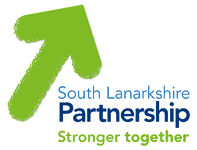Child Poverty Action Plan

The Child Poverty Action Plan sets out how we will work together to reduce child poverty in South Lanarkshire. Our work is supported by the following vision:
We will provide support to South Lanarkshire families in order to tackle child poverty head on, through an offer of the right support, at the right time and delivered in the right way.
This vision guides our work and we will report the progress of our work by publishing an annual update to report what we are doing to help our families.
Poverty cannot be addressed in isolation and our local communities and wider partnerships are key to achieving our vision and making sure that work to tackle poverty and in particular child poverty is integral to all that we do.
Our partners include the Department of Work and Pensions, Social Security Scotland, Voluntary Action South Lanarkshire (VASLAN) and our vibrant third sector, South Lanarkshire Council, Skills Development Scotland, South Lanarkshire Health and Social Care Partnership and our families and communities.
We want to make sure that what we do will make a real difference to families struggling every day to make ends meet. In South Lanarkshire, 22.8% of our children are living in relative poverty (24.5% in Scotland).
A family is considered to be living in relative poverty if their household income is below 60% of the average UK household income. This means that just under 14,000 children in South Lanarkshire (22%) are living in poverty and this is increasing.
Poverty has a grip on every town or neighbourhood but in some communities, this can mean as many as four out of 10 children are living in poverty. The following groups are more likely to be affected by poverty than others:
- lone parents
- children in households where someone is disabled
- families with 3+ children
- minority ethnic families
- families with youngest child aged under one year and mothers aged under 25
Our work is focused on three areas that are most likely to help families reduce the risk of child poverty.
Income from employment:
- hourly pay
- hours worked per household
- skills and qualifications
- labour market
- availability of affordable and accessible transport and childcare
Cost of living:
- housing costs
- other costs of living
- debts
- availability of affordable and accessible transport and childcare
- enablers (access to affordable credit, internet access, savings, and assets)
Income from social security and benefits in kind:
- generosity of benefits
- reach of benefits
- eligibility criteria
- take-up
The link below provides further information on increasing income from benefits and entitlements; increasing income from employment and what else can be done to help:



